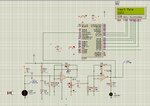mamush2013
Newbie level 4
Hello there
i'm working on my FYP! i face a difficulty when i was working the simulation part of my work! The component placement and connection looks like as indicated on the figure. as the error message indicates, in my opinion the cause of the error is the opamp LM324! i need your hand if u experienced and solve this type of problem before!
i'm working on my FYP! i face a difficulty when i was working the simulation part of my work! The component placement and connection looks like as indicated on the figure. as the error message indicates, in my opinion the cause of the error is the opamp LM324! i need your hand if u experienced and solve this type of problem before!
